SEO
How Zapier Built a Content Marketing Machine
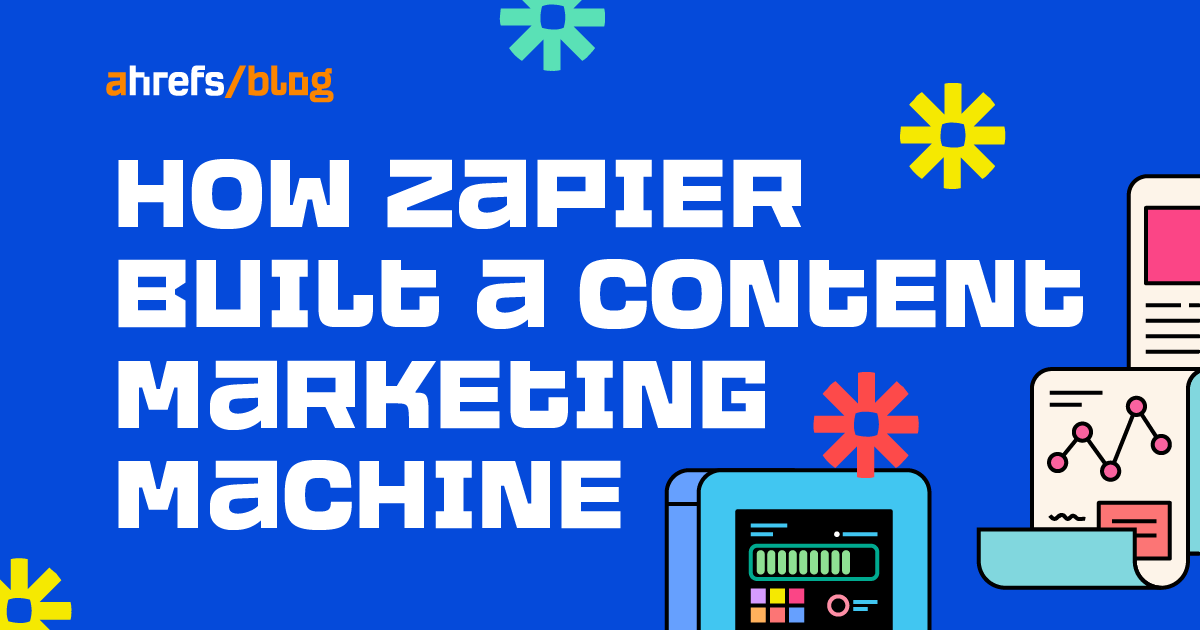
How do you help people discover software they need but don’t yet know exists?
That was the challenge I faced when I became the second member of Zapier’s editorial team in 2014.
Zapier’s team had built a tool to automate your tedious business tasks. Anything you could do by copying and pasting—tweeting new blog posts, emailing new customers, adding orders to a spreadsheet, alerting your team of outages—Zapier could do faster, better, and while you slept. Therein lay a content strategy.
Most people didn’t know they needed Zapier three years after it was first released, but they did know they needed a way to speed up their work and solve software issues. We could tell them how to build better software workflows—and recommend Zapier along the way.
That strategy helped us build a library of content that today brings in over 2 million readers to Zapier each month. Here’s how we built it.
People weren’t searching for Zapier, not in 2014 when the product was new to the market. But they were searching for Zapier’s complements, the tools that worked with Zapier that they were already using. That’s why Zapier created its App Directory, originally called the Zapbook, as a directory of every app that integrated with Zapier.
Every new app that integrated with Zapier got a landing page listing what it automated. Gmail’s page, for example, showed you could save attachments to Google Drive, send an email when your form got filled out, or create an Asana task via email.

Zapier’s App Directory also listed permutations for every integration: Gmail + Salesforce, Gmail + Slack, Gmail + Google Sheets, and on and on. That’s where the real magic happened. People would search for two app names (hoping to get them to work together) and then stumble upon Zapier along the way.
Today, there are 4,403 individual integration pages, plus an incredible 38,612 pair pages that together bring in over 299,000 monthly organic search visits.

It was difficult to rank for the more popular software, but there was always a very good chance that Zapier could rank for a lesser-known app pair—say, ShipStation and PayPal—when there was little, if any, content online about using those two tools together.

The challenge was making the App Directory pages unique. Zapier started the directory with a couple dozen preset sentences; when a new two-app page was created, it’d generate a phrase like “Connect App X and Y to automate your work and be more productive.” The danger was in having so many pages with similar, thin content.
So one of my first projects was writing software reviews for the App Directory. I’d test an app and write a 500-word walkthrough of what it was like to use that tool, add a few screenshots, and more to flesh out each app’s page.

Another similar content initiative revolved around automation templates. Zapier knew which apps people connected the most, and we knew from users how those automations were used. We’d turn those into Zapier workflows that anyone could enable in a few clicks—and I’d write a roughly 100-word description to help those workflows rank in search.

And it worked. First with Zapier’s team building templates, then with partners building templates for their users and, more recently, with Zap templates users can build and share on their own.
One of the top search results today for “email daily,” for example, is for a Zap that will let you set up an automatic daily email—a simple template that brings in ~2,400 organic visitors per month for search terms like “everyday email” and “send automatic email.”

Between those workflows and cross-linked content on the blog, today Zapier doesn’t rely on app walkthroughs to flesh out its App Directory pages. But the strategy helped boost the directory in its earliest days.
Write great stuff, and people will come. That was our basic strategy on Zapier’s blog.
It was something our managing editor, Melanie Pinola, brought from Lifehacker. “Their answer for what success looks like is ‘creating content that’s helpful,’” she told us.
My writing was focused on software tutorials and roundups. Zapier supported, at that time, hundreds of apps. I couldn’t write about everything, so it made sense to prioritize by popularity.
I’d start at the high level, checking Zapier’s software categories on Ahrefs to see which were most popular. To-do list apps and CRM software got 46,000 and 36,000 searches a month. I’d figured it was better to cover those first, then focus on smaller categories like HR or invoicing software later.

Then I’d drill down from there to find what people were searching for around these categories.
For example, I’d click the term “crm software” in Ahrefs and find that the top question was “what is CRM software” and that “CRM meaning” was a related popular term. So I’d make a note to write a guide for beginner CRM users. I’d also see the top CRMs people were searching for, such as HubSpot, when I was first writing the roundup (and Keap if you check for top CRM keywords today).

The research would also uncover topics to cover in the future. The most popular questions were about what a CRM is, so that’d be the next article I’d write as a companion to the CRM roundup. So “best CRM for small business” was another popular, easier-to-rank term—and Zapier later followed up on the original CRM roundup with a more focused roundup of those specifically for small businesses.

With keyword research out of the way, I’d switch to researching software to build an in-depth roundup article focused on the best CRM software—the keyword that most people were searching for when looking for a new CRM.
I’d test every CRM that Zapier supported, along with dozens of others. I’d take screenshots and write an App Directory roundup of each CRM tool, then pull the findings into a roundup article that showed how each app was differentiated from its peers.
It took days of research, but the final pieces were incredibly in-depth (my original CRM roundup covered 25 tools, and my Zapier project management app roundup was over 8,000 words and covered 50 tools).

We wrote hundreds of software roundup articles on Zapier—with 171 “best of” posts live on Zapier’s blog today. Together, they bring in an estimated 1.1 million organic visits each month, years after many of them were originally researched and published.

Maybe I didn’t have to write so much. Shorter pieces can rank well too. And Zapier’s more recently updated takes on those pieces pick eight or 10 best options for a more Wirecutter-style selected take.
But the ultra-long-form pieces had their advantages. The longer content included more keywords—niche keywords, again, that we were more likely to rank for. They also let us surprise and delight more teams at other companies. I’d email each app I featured, letting them know about the article. Slowly but surely, as more partners linked to our roundups, Zapier gained backlinks and climbed Google’s search rankings.
The research took forever, but it always inspired follow-up posts. Once I’d finished the roundup, I switched gears and wrote the “What is a CRM?” article. That today still brings in hundreds of monthly organic visitors, along with the over 13,000 monthly organic visitors from the roundup. Over time, using this strategy, we ended with an incredibly wide range of roundups and tutorials that have dominated Zapier’s search traffic for years.
Sidenote.
One caveat: I never wrote roundups about automation tools. My rules of what not to write included not making a roundup or comparison table that had my employer’s product. It’d be impossible to portray Zapier’s content as truly independent if Zapier itself was featured on the list. But I could be unbiased—as much as anyone could be—about our partners and the tools in their categories. And that let Zapier build an audience of readers who trusted our writing.
Roundups weren’t for everyone. To borrow terms from the project development lifecycle, they were written for readers in the discovery phase who were searching for a new tool.
Then they’d need to do stuff in the app. That’s where Zapier’s tutorials (and the App Directory’s premade Zapier workflows) came in. Those brought in readers during their development phase—when they were developing a workflow and were most likely to start using Zapier.

Google Sheets-focused tutorials worked especially well here. I wrote a tutorial on how to use the LOOKUP function in Google Sheets—plus how to automatically look up data in spreadsheets and more with Zapier. A companion tutorial showed how to split text—say, split a first and a last name into separate columns—in spreadsheets, followed by how to automate that in forms and more with Zapier.

These tutorials bring in a couple thousand search visits per month—fewer visitors than roundups, but these are visitors more likely to need and use Zapier.

But you only need so many app roundups and tutorials. The next time we wrote about to-do list apps, you wouldn’t be interested; the app you picked was humming along. You might be interested in learning how other teams manage projects, how remote work works, or about hitting inbox zero.
That’s why Zapier also wrote productivity articles: to maintain our relationship with readers by sending them something interesting each week. Those were the pieces easiest to syndicate—to get others to republish as guest posts that built backlinks and brought in new sources of readers and a bit more brand equity. They were less of my focus in Zapier’s earlier years but more of a core part of Zapier’s brand building and audience retention work today.
Roundups brought in far more pageviews. Tutorials brought in far more customers per pageview. Productivity posts brought back more repeat readers. Together, they built a search-powered growth engine.
What is published can always be published again too.
That was the third pillar of Zapier’s content: our Learning Center and its ebooks.

Once I’d written everything core about a software category like CRMs or a popular tool like Google Sheets, I’d pull those posts together, build them into an ebook with Leanpub, then publish on the Kindle and iBooks stores. The new ebook landing page drove email signups from book downloads and earned a higher time on site as people read one post after another instead of browsing just a single roundup.
Best of all, Zapier got a new audience from the ebook stores as a bit of off-Google SEO. People searched for Google Sheets in the Amazon store, downloaded Zapier’s book, then clicked through as they read the book. It wasn’t as easy to measure or value as Google search clicks, but it was search-driven traffic all the same.
Search data was a core part of prioritizing which of my ideas were best to write first. But experimentation also played a large part in my writing.
One day, for instance, I was trying to connect to the Wi-Fi at a mechanic while getting my car’s battery changed. It hit me that I should write a quick tutorial on how to get the Wi-Fi password pop-up to open when it wouldn’t at airports, coffee shops, and the like. A few hundred words later, the hastily written post was live.

And it blew up, getting over 100,000 visits a month at its peak—more traffic than most of our well-researched, search-focused content did. It’s still, today, bringing in thousands of readers every month, ranking organically in the top three for terms like “force wifi login page” and “hilton wifi login,” of all things.

Turns out, experimenting and scratching your own itches can work out every so often too.
Final thoughts
Search data is historical data, records of what people searched at some time in the past.
If you hit a problem today and are on the bleeding edge, that problem may be something few people face today but one that more and more people will start facing later. If you write about some new thing, it’s not going to show promise in Ahrefs data today.
Just be patient. When that thing you wrote about suddenly is in the news or becomes an emerging trend, you’ll be ahead of the game before it starts.
So do your research. Publish stuff where you have a chance to rank well on search. Write long-form, especially at first, if it gives you a chance to build more keywords and connections into a piece.
But also, never stop experimenting. If you really want to write something, go for it even if the stats aren’t there yet. It can’t hurt, and it just may be your breakout piece.
SEO
Google Declares It The “Gemini Era” As Revenue Grows 15%

Alphabet Inc., Google’s parent company, announced its first quarter 2024 financial results today.
While Google reported double-digit growth in key revenue areas, the focus was on its AI developments, dubbed the “Gemini era” by CEO Sundar Pichai.
The Numbers: 15% Revenue Growth, Operating Margins Expand
Alphabet reported Q1 revenues of $80.5 billion, a 15% increase year-over-year, exceeding Wall Street’s projections.
Net income was $23.7 billion, with diluted earnings per share of $1.89. Operating margins expanded to 32%, up from 25% in the prior year.
Ruth Porat, Alphabet’s President and CFO, stated:
“Our strong financial results reflect revenue strength across the company and ongoing efforts to durably reengineer our cost base.”
Google’s core advertising units, such as Search and YouTube, drove growth. Google advertising revenues hit $61.7 billion for the quarter.
The Cloud division also maintained momentum, with revenues of $9.6 billion, up 28% year-over-year.
Pichai highlighted that YouTube and Cloud are expected to exit 2024 at a combined $100 billion annual revenue run rate.
Generative AI Integration in Search
Google experimented with AI-powered features in Search Labs before recently introducing AI overviews into the main search results page.
Regarding the gradual rollout, Pichai states:
“We are being measured in how we do this, focusing on areas where gen AI can improve the Search experience, while also prioritizing traffic to websites and merchants.”
Pichai reports that Google’s generative AI features have answered over a billion queries already:
“We’ve already served billions of queries with our generative AI features. It’s enabling people to access new information, to ask questions in new ways, and to ask more complex questions.”
Google reports increased Search usage and user satisfaction among those interacting with the new AI overview results.
The company also highlighted its “Circle to Search” feature on Android, which allows users to circle objects on their screen or in videos to get instant AI-powered answers via Google Lens.
Reorganizing For The “Gemini Era”
As part of the AI roadmap, Alphabet is consolidating all teams building AI models under the Google DeepMind umbrella.
Pichai revealed that, through hardware and software improvements, the company has reduced machine costs associated with its generative AI search results by 80% over the past year.
He states:
“Our data centers are some of the most high-performing, secure, reliable and efficient in the world. We’ve developed new AI models and algorithms that are more than one hundred times more efficient than they were 18 months ago.
How Will Google Make Money With AI?
Alphabet sees opportunities to monetize AI through its advertising products, Cloud offerings, and subscription services.
Google is integrating Gemini into ad products like Performance Max. The company’s Cloud division is bringing “the best of Google AI” to enterprise customers worldwide.
Google One, the company’s subscription service, surpassed 100 million paid subscribers in Q1 and introduced a new premium plan featuring advanced generative AI capabilities powered by Gemini models.
Future Outlook
Pichai outlined six key advantages positioning Alphabet to lead the “next wave of AI innovation”:
- Research leadership in AI breakthroughs like the multimodal Gemini model
- Robust AI infrastructure and custom TPU chips
- Integrating generative AI into Search to enhance the user experience
- A global product footprint reaching billions
- Streamlined teams and improved execution velocity
- Multiple revenue streams to monetize AI through advertising and cloud
With upcoming events like Google I/O and Google Marketing Live, the company is expected to share further updates on its AI initiatives and product roadmap.
Featured Image: Sergei Elagin/Shutterstock
SEO
brightonSEO Live Blog
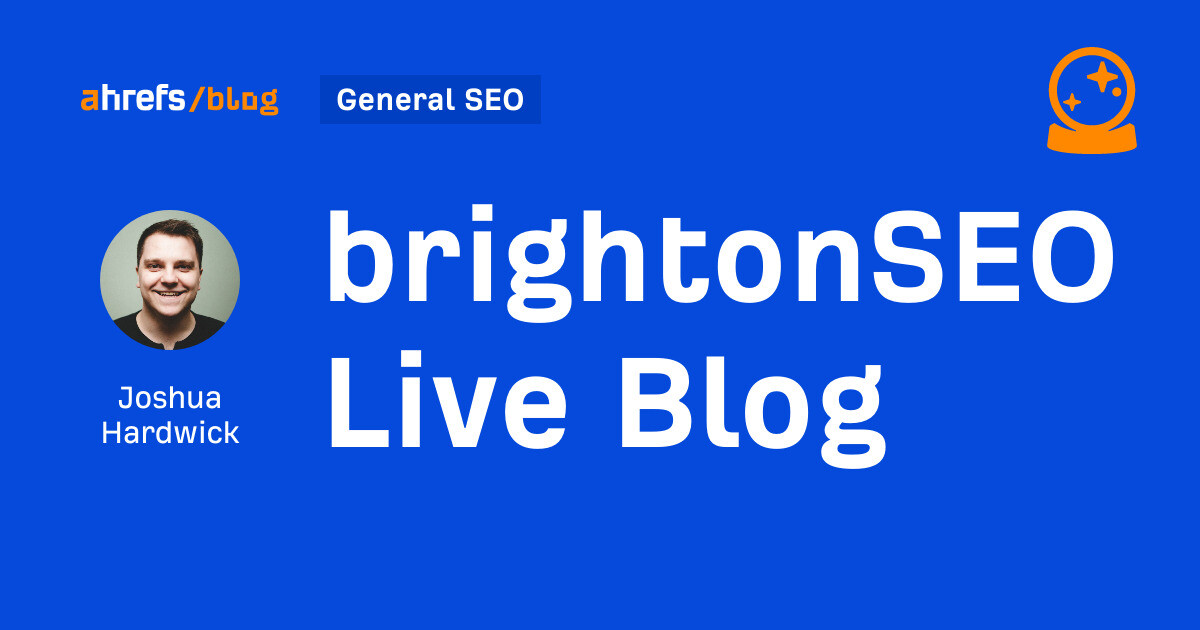
Hello everyone. It’s April again, so I’m back in Brighton for another two days of Being the introvert I am, my idea of fun isn’t hanging around our booth all day explaining we’ve run out of t-shirts (seriously, you need to be fast if you want swag!). So I decided to do something useful and live-blog the event instead.
Follow below for talk takeaways and (very) mildly humorous commentary. sun, sea, and SEO!
SEO
Google Further Postpones Third-Party Cookie Deprecation In Chrome

Google has again delayed its plan to phase out third-party cookies in the Chrome web browser. The latest postponement comes after ongoing challenges in reconciling feedback from industry stakeholders and regulators.
The announcement was made in Google and the UK’s Competition and Markets Authority (CMA) joint quarterly report on the Privacy Sandbox initiative, scheduled for release on April 26.
Chrome’s Third-Party Cookie Phaseout Pushed To 2025
Google states it “will not complete third-party cookie deprecation during the second half of Q4” this year as planned.
Instead, the tech giant aims to begin deprecating third-party cookies in Chrome “starting early next year,” assuming an agreement can be reached with the CMA and the UK’s Information Commissioner’s Office (ICO).
The statement reads:
“We recognize that there are ongoing challenges related to reconciling divergent feedback from the industry, regulators and developers, and will continue to engage closely with the entire ecosystem. It’s also critical that the CMA has sufficient time to review all evidence, including results from industry tests, which the CMA has asked market participants to provide by the end of June.”
Continued Engagement With Regulators
Google reiterated its commitment to “engaging closely with the CMA and ICO” throughout the process and hopes to conclude discussions this year.
This marks the third delay to Google’s plan to deprecate third-party cookies, initially aiming for a Q3 2023 phaseout before pushing it back to late 2024.
The postponements reflect the challenges in transitioning away from cross-site user tracking while balancing privacy and advertiser interests.
Transition Period & Impact
In January, Chrome began restricting third-party cookie access for 1% of users globally. This percentage was expected to gradually increase until 100% of users were covered by Q3 2024.
However, the latest delay gives websites and services more time to migrate away from third-party cookie dependencies through Google’s limited “deprecation trials” program.
The trials offer temporary cookie access extensions until December 27, 2024, for non-advertising use cases that can demonstrate direct user impact and functional breakage.
While easing the transition, the trials have strict eligibility rules. Advertising-related services are ineligible, and origins matching known ad-related domains are rejected.
Google states the program aims to address functional issues rather than relieve general data collection inconveniences.
Publisher & Advertiser Implications
The repeated delays highlight the potential disruption for digital publishers and advertisers relying on third-party cookie tracking.
Industry groups have raised concerns that restricting cross-site tracking could push websites toward more opaque privacy-invasive practices.
However, privacy advocates view the phaseout as crucial in preventing covert user profiling across the web.
With the latest postponement, all parties have more time to prepare for the eventual loss of third-party cookies and adopt Google’s proposed Privacy Sandbox APIs as replacements.
Featured Image: Novikov Aleksey/Shutterstock
-

 PPC7 days ago
PPC7 days ago19 Best SEO Tools in 2024 (For Every Use Case)
-
SEARCHENGINES6 days ago
Daily Search Forum Recap: April 19, 2024
-
SEARCHENGINES7 days ago
Daily Search Forum Recap: April 18, 2024
-
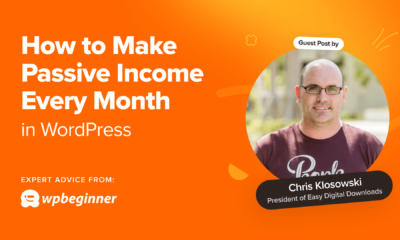
 WORDPRESS6 days ago
WORDPRESS6 days agoHow to Make $5000 of Passive Income Every Month in WordPress
-

 SEO7 days ago
SEO7 days ago25 WordPress Alternatives Best For SEO
-
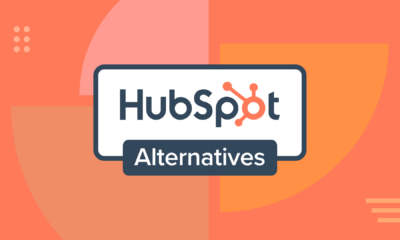
 WORDPRESS5 days ago
WORDPRESS5 days ago13 Best HubSpot Alternatives for 2024 (Free + Paid)
-
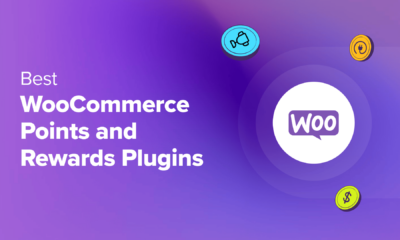
 WORDPRESS6 days ago
WORDPRESS6 days ago7 Best WooCommerce Points and Rewards Plugins (Free & Paid)
-

 MARKETING6 days ago
MARKETING6 days agoBattling for Attention in the 2024 Election Year Media Frenzy








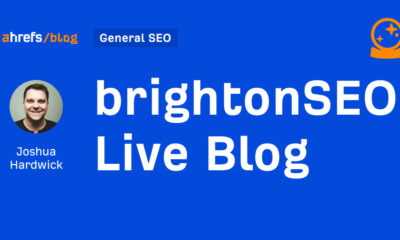







You must be logged in to post a comment Login